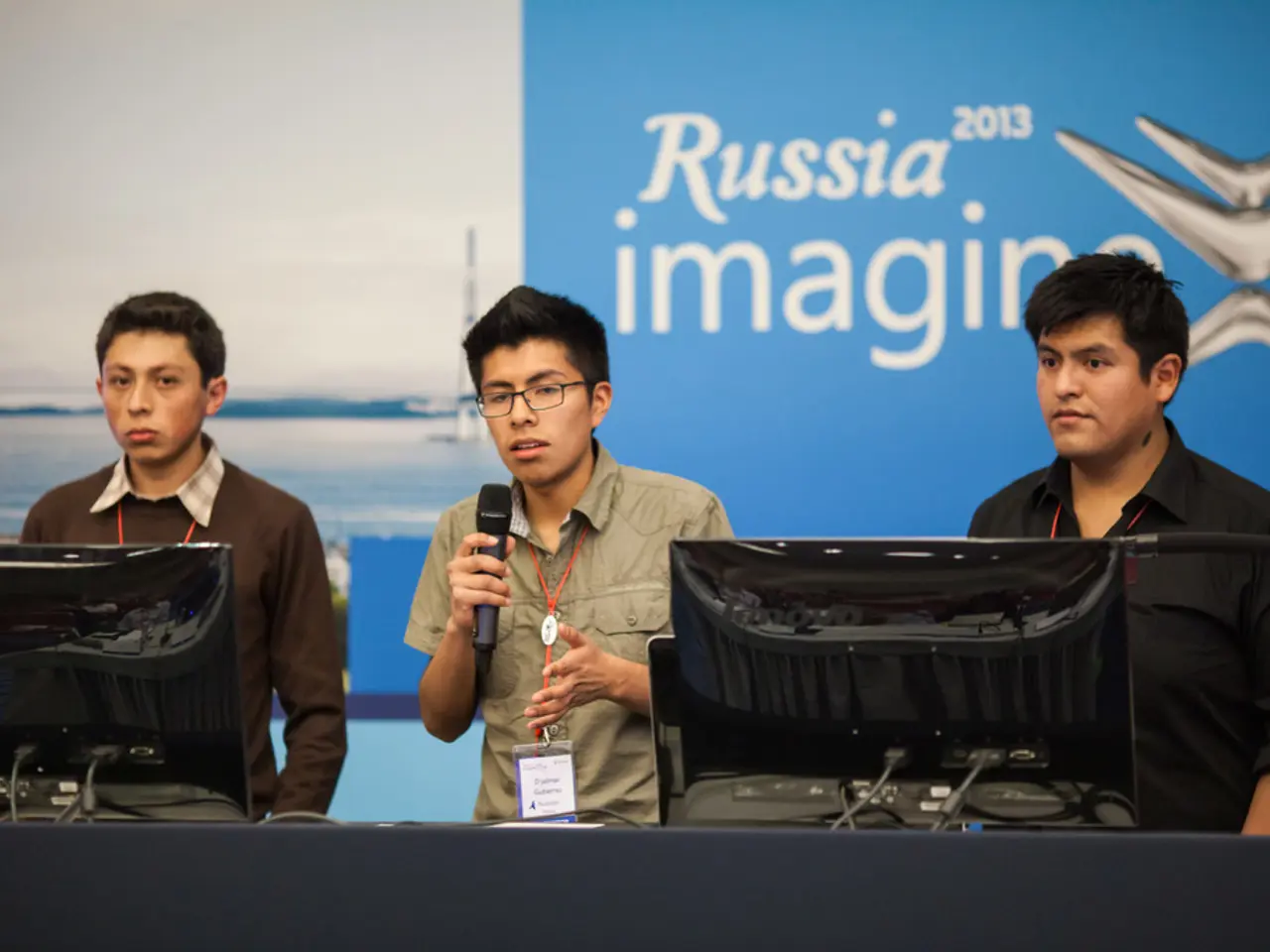Over 117,000 individuals enrolled in the Unified Biometric Identification Database
In a significant move towards modernization, Russia is leveraging biometric technologies to enhance government service delivery. This expansion, part of a broader government push to digitize public services, aims to enhance security, improve administrative efficiency, and provide a more accessible and convenient experience for citizens[1][2][3][4].
The Unified Biometric System (UBS), a digital platform that includes facial recognition and fingerprint scanning for digital identity verification, is at the heart of this transformation. One of the associated applications, 'Gosuslugi Biometry', has been downloaded over 3 million times across all platforms[1].
The UBS is particularly beneficial for residents of remote areas and people with disabilities, as stated by Denis Mchedlishvili, head of the Ministry of Digital Development of the Komi Republic. Registration for UBS services can be done at a bank or through the 'Gosuslugi Biometry' application[2].
The benefits of biometrics are manifold. It serves as an additional, simple, and convenient method of accessing services, similar to a password or a passport. Moreover, identification through the UBS eliminates risks associated with losing documents or passwords[2].
The use of biometric services provided by the UBS has been extensive, with citizens using these services over 100 million times in total, according to the Center for Biometric Technologies[1]. In the Komi Republic alone, the number of individuals registered in the UBS has reached 177,000[1].
The key principle of biometrics is voluntary use. Dmitry Grigorenko, head of the Government of Russia's apparatus, made a statement about the use of biometrics, emphasizing that it is an optional tool for accessing services[1]. Data in the UBS is securely protected, according to Mchedlishvili[2].
The total number of Russians registered in the UBS has approached 7 million, and the UBS registers approximately 40,000 Russians daily[2]. However, as the government continues to roll out biometric services nationwide, efforts to ensure accessibility and digital literacy in remote areas and for people with disabilities remain crucial[3].
References:
[1] Kommersant. (2021, July 16). Услуги по биометрическим данным в России стали доступны 7 млн человек. Retrieved from https://www.kommersant.ru/doc/4748650
[2] TASS. (2021, July 15). В Республике Коми зарегистрировались 177 тысяч человек в системе УБС. Retrieved from https://tass.ru/obschestvo/12093431
[3] Russian Ministry of Digital Development, Communications and Mass Media. (2021). Digital Economy of the Russian Federation. Retrieved from https://digital.gov.ru/
[4] Russian Government. (2021). Digital Transformation Strategy. Retrieved from https://gov.ru/government/activity/digital-transformation-strategy/
Technology, data-and-cloud-computing, and biometrics are integral components of Russia's digital transformation, with the Unified Biometric System (UBS) leveraging facial recognition and fingerprint scanning to enhance government service delivery for over 7 million citizens across the country. The UBS provides a convenient, optional, and secure tool for accessing services, especially beneficial for residents of remote areas and people with disabilities through the 'Gosuslugi Biometry' application.




